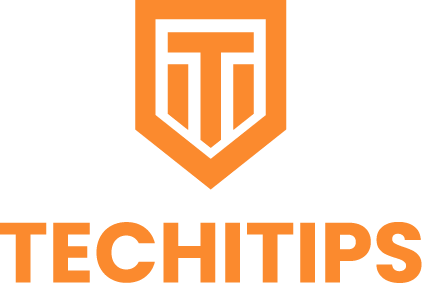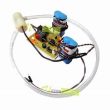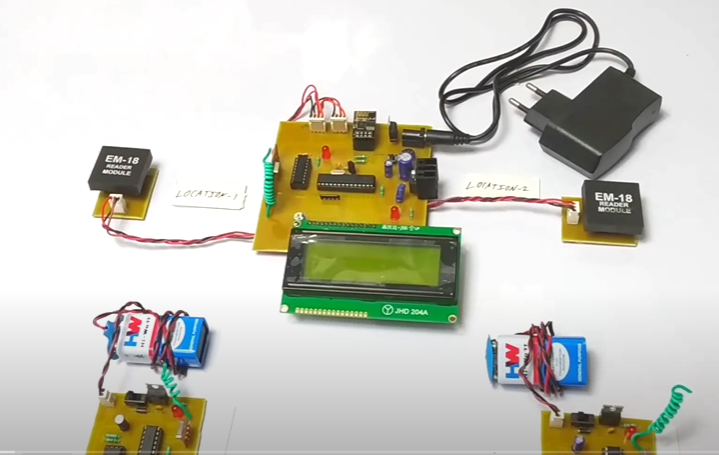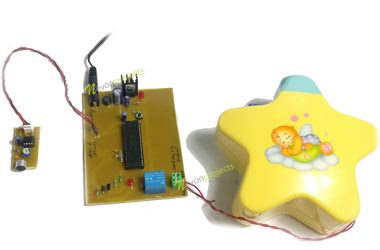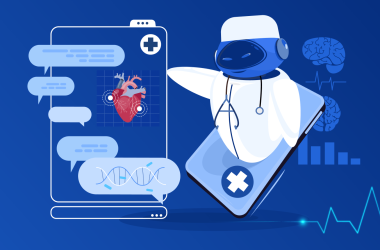Mining plays a pivotal role in the development of various goods, infrastructure, and services that enhance the quality of life. However, it’s no secret that the mining industry is riddled with numerous health and safety risks. Miners often face hazardous conditions due to unstable underground environments, oxygen deprivation, toxic gases, or physical injuries. The deeper the mines, the more dangerous the working conditions become. Therefore, ensuring the safety of miners is a top priority.
In the age of technology, the Internet of Things (IoT) is providing innovative solutions for industrial challenges, and mining safety is no exception. The IoT-based Mining Tracking & Worker Safety Helmet is a groundbreaking development aimed at safeguarding miners in hazardous environments. This helmet integrates several advanced components like RF (radio frequency) tracking, emergency alert systems, and real-time data transmission via IoT, ensuring miners’ safety through constant monitoring and swift emergency response.
Outline: IOT Mining Tracking & Worker Safety Helmet
- Introduction
- Importance of Mining in Society
- The Dangers of Mining
- How Technology is Revolutionizing Mining Safety
- Introduction to IoT-based Mining Safety Helmet
- The Concept of IOT in Mining Safety
- What is IoT?
- Why IoT is a Game-Changer for Mining Safety
- Overview of IoT-based Tracking System in Mining Helmets
- Structure and Components of the IoT Mining Helmet
- Atmega Microcontroller
- WiFi Module
- RF Transmitter and Receiver
- Buzzer
- LCD Display
- Crystal Oscillator
- Resistors, Capacitors, and Transistors
- Cables, Connectors, and PCB
- LEDs and Diodes
- Power Supply and Transformers
- Push Buttons and Switches
- Understanding the Block Diagram of the System
- Overview of the Helmet’s Hardware Setup
- How the Helmet Communicates with IoT Systems
- Panic Button Integration for Emergency Situations
- How the System Works
- Real-Time Worker Tracking Using RF Technology
- Emergency Alerts via Panic Button
- How Data is Transmitted Over the IoT Network
- Gas Detection and Other Safety Features
- Designing the IoT-Based Mining Helmet
- Hardware Design: Step-by-Step Breakdown
- Software Design: Using C Programming for Integration
- IoT Gecko: The Platform for Data Monitoring and Alerts
- Benefits of IoT-Based Mining Safety Helmet
- Improved Worker Safety
- Real-Time Monitoring and Tracking
- Instant Emergency Alerts and Responses
- Efficiency in Data Collection and Analysis
- Challenges in Implementing IoT in Mining
- Harsh Environmental Conditions
- Connectivity Issues in Remote Locations
- Battery Life and Durability of Helmets
- Applications Beyond Worker Safety
- Enhancing Productivity through Worker Tracking
- Data-Driven Decision Making in Mine Operations
- Future Possibilities for IoT in Mining
- Conclusion
- The Future of Mining with IoT
- Final Thoughts on IoT Mining Safety Helmets
- FAQs
- How does the IoT mining helmet ensure worker safety?
- Can the system work in extremely deep mines?
- What kind of emergency situations can the helmet detect?
- How is data transmitted from the mining site to the monitoring system?
- What are the challenges of using IoT in mining?
IOT Mining Tracking & Worker Safety Helmet: Structure, Working, and Design
Introduction
Mining is one of the oldest industries in human history, providing essential resources for various industries. Despite its significance, it is one of the most dangerous professions due to unstable underground environments, oxygen shortages, toxic gases, and other hazards. The need for improved safety measures in the mining industry has led to the creation of the IoT-based Mining Tracking & Worker Safety Helmet. This advanced helmet integrates real-time worker tracking and emergency alert systems to safeguard miners against unforeseen dangers.
The Concept of IoT in Mining Safety
The Internet of Things (IoT) refers to a network of connected devices that can communicate with each other and share data over the internet. In mining, IoT technologies can be applied to monitor workers’ locations, environmental conditions, and safety hazards in real-time. This can enhance safety and provide instant alerts during emergencies.
Structure and Components of the IoT Mining Helmet
The IoT Mining Tracking & Worker Safety Helmet consists of several key components:
- Atmega Microcontroller: The brain of the system that processes data and controls various operations of the helmet.
- WiFi Module: Allows communication between the helmet and IoT servers by transmitting data wirelessly.
- RF Transmitter and Receiver: Tracks the workers’ locations throughout the mining site by transmitting and receiving radio frequency signals.
- Buzzer: An alarm system that alerts the miner and control center in case of any detected danger or emergency situation.
- LCD Display: Provides visual information to the worker, such as gas levels or emergency alerts.
- Crystal Oscillator: Ensures precise timing for operations within the microcontroller.
- Resistors, Capacitors, and Transistors: Core electronic components that support the functioning of the helmet’s circuit.
- Cables, Connectors, and PCB: The physical wiring and platform that connects all the components.
- LEDs and Diodes: Used for indicating various signals or statuses.
- Power Supply and Transformers: Keeps the helmet powered and operational even in low-power situations.
- Push Buttons and Switches: Allows manual control and emergency inputs from the worker.
Understanding the Block Diagram of the System
The helmet’s block diagram outlines how each component interacts to ensure efficient functioning. The RF transmitter in the helmet communicates with an RF receiver located at the control center. These signals help map the workers’ real-time location, while the microcontroller processes and manages all incoming data. The helmet’s emergency panic button sends an immediate alert when pressed, which appears on the IoT interface for quick response.
How the System Works
The primary goal of the IoT-based mining safety helmet is to provide real-time worker tracking and emergency alerts. Here’s how it functions:
- Real-Time Worker Tracking: The RF transmitter in the helmet continuously sends signals to the RF receiver, which helps track the worker’s location. This data is then transmitted to the control center through the WiFi module.
- Emergency Alerts: In case of emergencies such as toxic gas inhalation or cave-ins, the worker can press the panic button. This action triggers an emergency alert, which is displayed on the IoT monitoring system.
- Gas Detection and Other Safety Features: The system can be integrated with gas sensors to detect toxic gases and provide alerts. Other possible integrations include temperature monitoring, pressure sensors, and more.
Designing the IoT-Based Mining Helmet
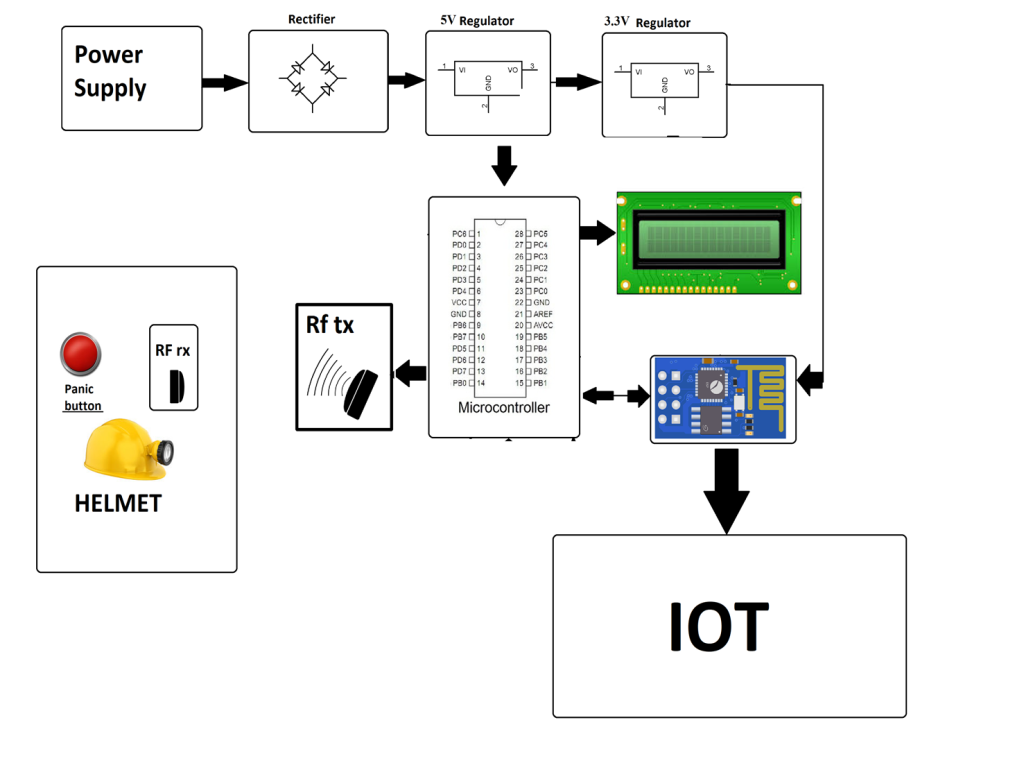
Hardware Design:
The hardware of the IoT helmet is centered around the Atmega microcontroller. Components like the RF transmitter, WiFi module, LCD display, and buzzer are connected to the microcontroller, enabling seamless communication between the helmet and the monitoring system. Proper wiring, soldering, and assembling of the PCB (Printed Circuit Board) ensure durability and functionality.
Software Design:
The system is programmed using C language to manage data from sensors, control emergency alerts, and manage real-time communication. The IoT platform used here is IoT Gecko, which provides a reliable interface for monitoring and analyzing data from the mining site.
Benefits of IoT-Based Mining Safety Helmet
The helmet provides a wealth of benefits, including:
- Enhanced Worker Safety: With real-time location tracking and emergency alert capabilities, workers are better protected in case of accidents.
- Real-Time Monitoring: The helmet offers instant tracking of workers, improving rescue operations and minimizing risks.
- Improved Response Times: The panic button and alert system ensure that emergencies are dealt with swiftly.
- Data Collection: Continuous monitoring helps collect valuable data that can be analyzed to improve mine safety practices.
Challenges in Implementing IoT in Mining
Despite its advantages, there are challenges in deploying IoT in mining:
- Harsh Environments: Mines are often hostile to electronics due to moisture, dust, and pressure changes, requiring rugged and durable equipment.
- Connectivity: Establishing strong internet connections in remote mining locations can be difficult, impacting the helmet’s ability to communicate.
- Battery Life: Prolonged use in remote locations requires long-lasting batteries, which need to be efficient and robust.
Applications Beyond Worker Safety
IoT technology in mining is not limited to worker safety. It can also be used for:
- Productivity Tracking: Monitoring workers’ movements can optimize work schedules and improve efficiency.
- Data-Driven Decision Making: Continuous data collection can inform mine operators about potential hazards or inefficiencies, leading to better operational strategies.
Conclusion
The IoT Mining Tracking & Worker Safety Helmet represents a significant advancement in mining safety. By leveraging IoT technology, this helmet enhances the protection of miners through real-time tracking, emergency alerts, and continuous monitoring. As the mining industry continues to evolve, technologies like this will play an essential role in ensuring safer, more efficient operations.
